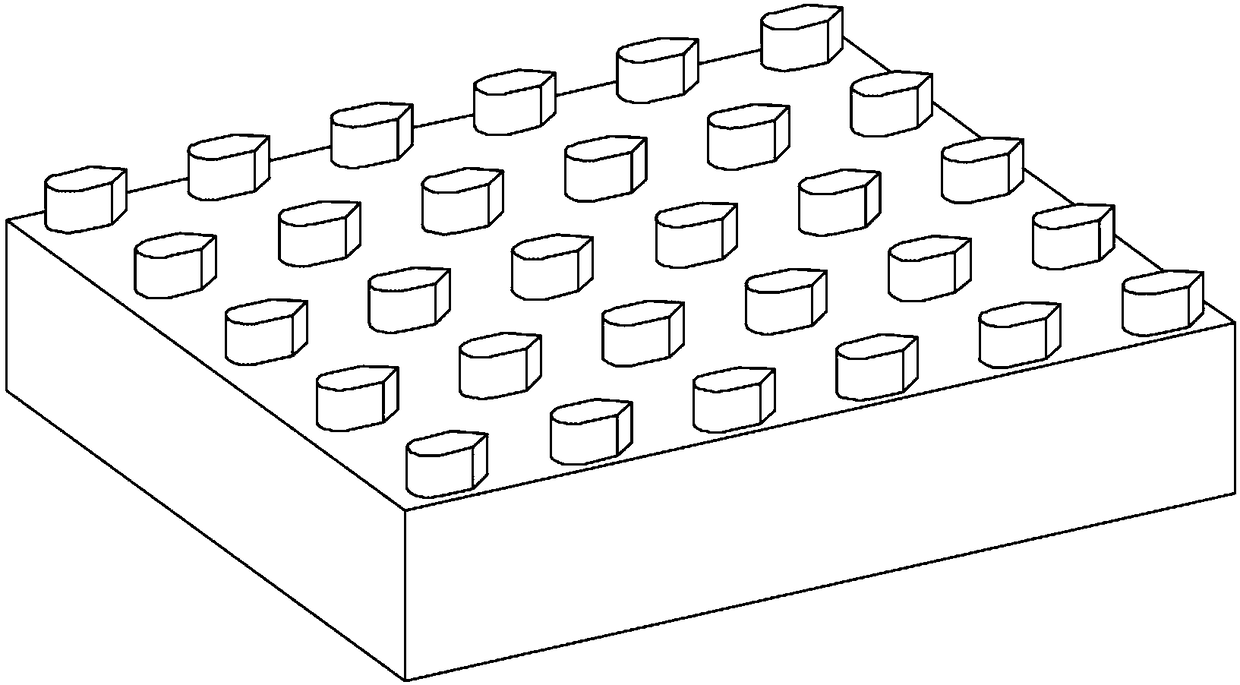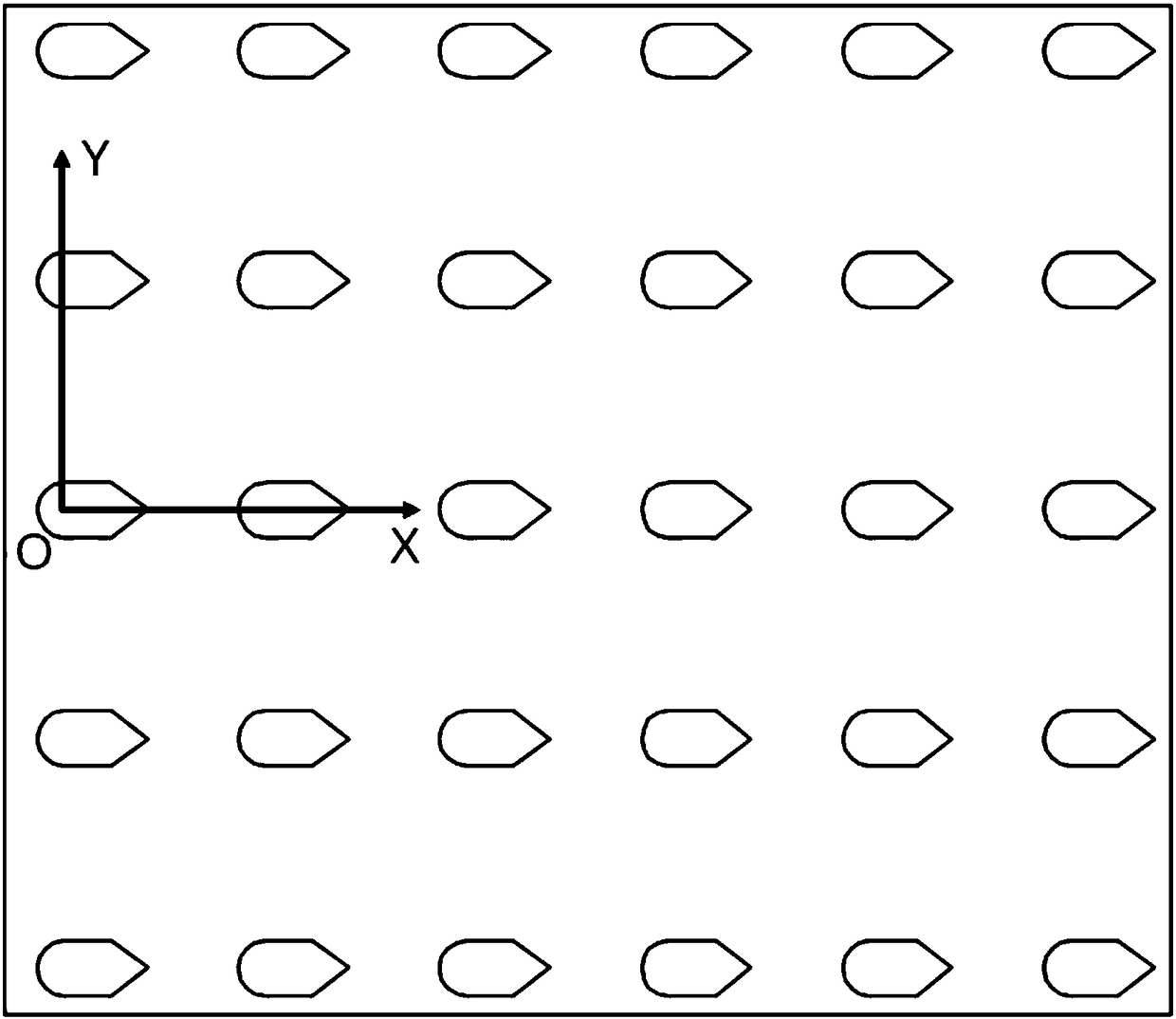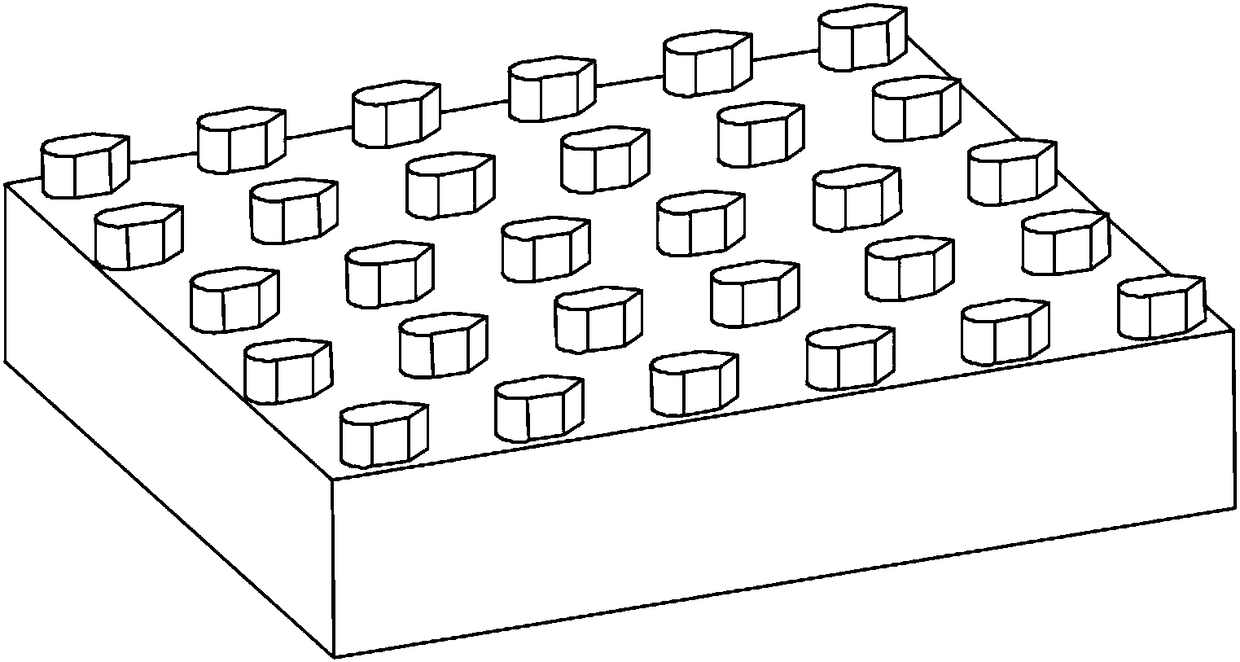Fusiform bionic microstructure with drag reduction characteristics
A microstructure and shuttle-shaped technology, applied in the field of microstructure functional materials, can solve problems such as process complexity and immature research
- Summary
- Abstract
- Description
- Claims
- Application Information
AI Technical Summary
Problems solved by technology
Method used
Image
Examples
specific Embodiment approach 1
[0019] Both the shuttle-shaped structure layer and the base material layer are made of PDMS (polydimethylsiloxane). The overall length of the fusiform structure is 48 microns, the width is 24 microns, and the height is 24 microns. The radius of curvature of the arc end is 12 microns, and the included angle of the pointed end is 75°. The fusiform structures are arranged along the curve on the horizontal plane on the base material with a smooth surface. The distance between adjacent fusiform structures on the same curve is 88 microns, and the distance between adjacent curves is 100 microns. The arrangement and position of the upper shuttle-shaped structures are the same.
specific Embodiment approach 2
[0020] Both the shuttle structure layer and the base material layer are made of aluminum alloy. The overall length of the fusiform structure is 52 microns, the width is 28 microns, the height is 24 microns, the radius of curvature of the arc end is 16 microns, and the included angle of the pointed end is 78°. The shuttle-shaped structures are arranged on the base material along the curve on the horizontal plane. The surface of the base material is a plane with a certain roughness. The distance between adjacent shuttle-shaped structures on the same curve is 90 microns, and the distance between adjacent curves is 98 microns. The arrangement of the fusiform structures on the adjacent curves is the same, but the corresponding fusiform structures on the adjacent curves are staggered, and the dislocation distance is 12 microns.
specific Embodiment approach 3
[0021] Both the shuttle structure layer and the base material layer are made of photoresist material. The overall length of the fusiform structure is 52 microns, the width is 28 microns, the radius of curvature of the arc end is 16 microns, and the included angle of the pointed end is 78°. The fusiform structures are arranged along smooth curves, and the curves are distributed on the horizontal plane. The surface of the base material is a corrugated surface with a peak-to-trough distance of 20 microns and a wave period of 200 microns, and the distance from the upper surface of the shuttle-shaped structure to a certain contour is the same. The distance between adjacent fusiform structures on the same curve is 90 microns, the distance between adjacent curves is 98 microns, and the arrangement and position of the fusiform structures on adjacent curves are the same.
PUM
| Property | Measurement | Unit |
|---|---|---|
| length | aaaaa | aaaaa |
| width | aaaaa | aaaaa |
| height | aaaaa | aaaaa |
Abstract
Description
Claims
Application Information
 Login to View More
Login to View More - Generate Ideas
- Intellectual Property
- Life Sciences
- Materials
- Tech Scout
- Unparalleled Data Quality
- Higher Quality Content
- 60% Fewer Hallucinations
Browse by: Latest US Patents, China's latest patents, Technical Efficacy Thesaurus, Application Domain, Technology Topic, Popular Technical Reports.
© 2025 PatSnap. All rights reserved.Legal|Privacy policy|Modern Slavery Act Transparency Statement|Sitemap|About US| Contact US: help@patsnap.com



